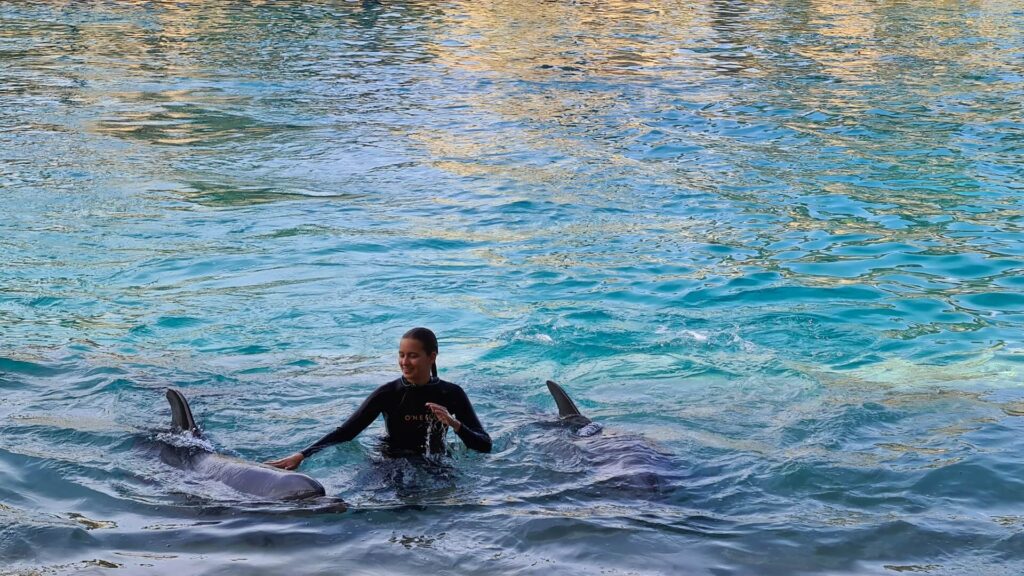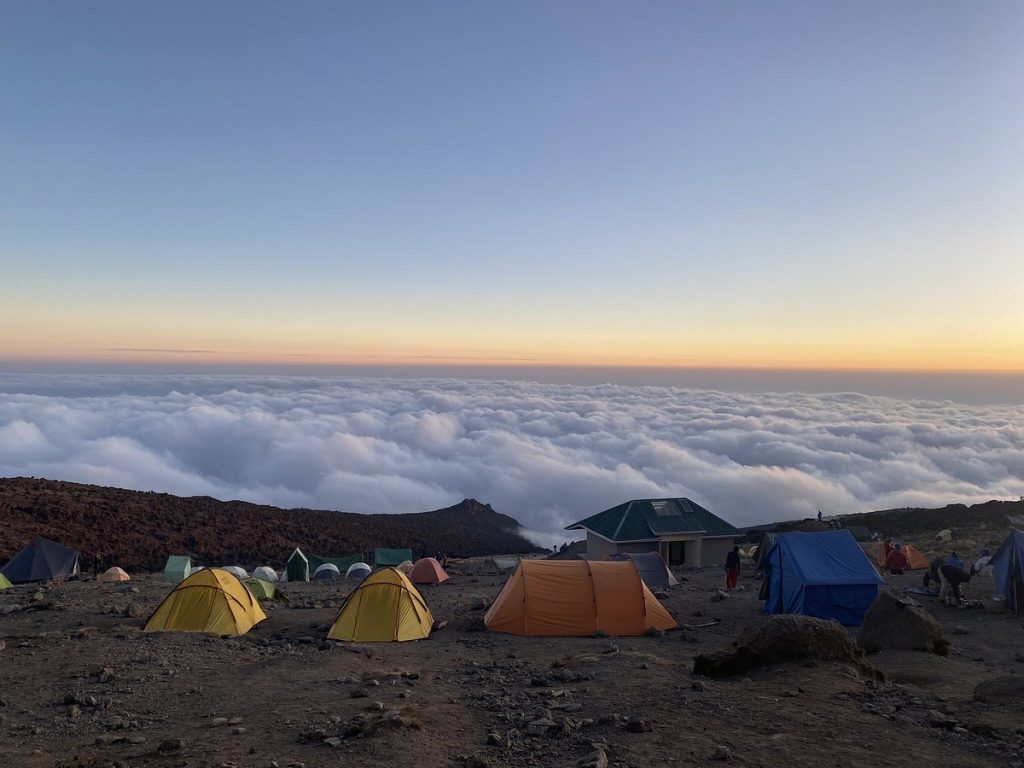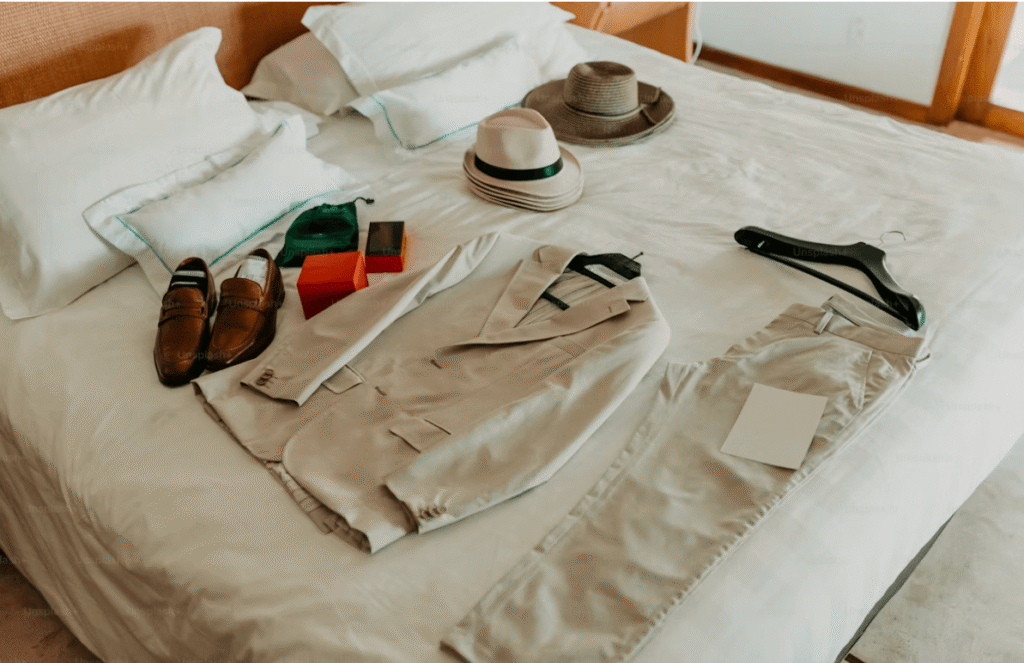Weather and Climate
The climate in Zanzibar is pleasant, and Zanzibar generally enjoys good vacation weather year-round. The warmest period (December) is comfortable, as the northern and eastern parts of Zanzibar are occasionally cooled by a pleasant breeze. Officially, it is summer in December and winter in June, but since Zanzibar is just below the equator, it remains warm throughout the year. On average, Zanzibar has about 7 to 8 hours of sunshine each day.
Rain during the short rainy season in November consists of brief showers. The long rains typically occur from April to May and are referred to as the “green season.” It does not usually rain every day during this period.
The climate in Zanzibar is influenced by the monsoon winds of the Indian Ocean, which follow a regular pattern. From April to October, there is a southwest monsoon, and from November to March, the monsoon winds shift to a northeast monsoon.
Tides in Zanzibar
In Zanzibar, the tidal range is about 4 meters, which means there are high tides (flood) twice a day and low tides (ebb) twice a day. Follow this link to see Zanzibar’s tidal curve.
In southeastern Zanzibar, where the waters are shallow, swimming is not possible every twelve hours as the water recedes and the coral floor of the Zanzibar is exposed. Tides are primarily influenced by the moon’s position, so the tidal patterns vary from day to day throughout the month. Generally, the greatest tidal range occurs during new and full moons (about 4 meters), while the difference between ebb and flood is significantly smaller during the half moon (about 2 meters).
These tidal variations are pleasant as the landscape continuously changes character, allowing you to observe the daily activities of the local people, such as seaweed farming and fishing. The adventurous can walk out about 500 to 1000 meters on the coral floor during low tide to snorkel inside the reef. Remember to wear shoes to protect your feet from sharp corals and sea urchins (regular sandals may break as the sole can easily detach from the shoe).
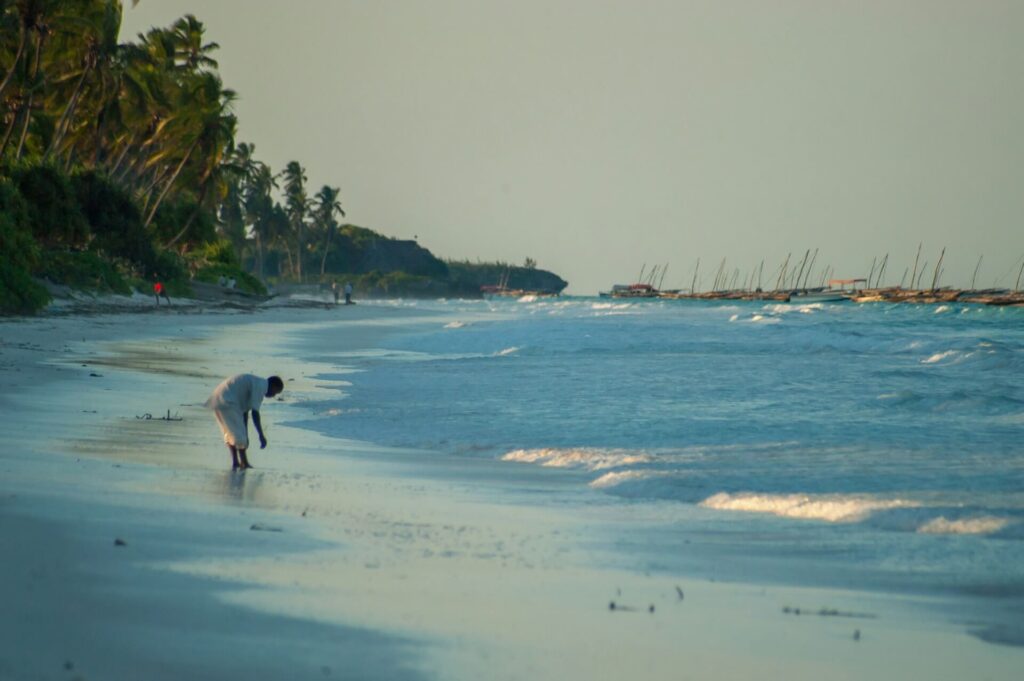
Excursions and Activities to Do in Zanzibar:
Jozani Forest Reserve
Jozani Forest is now called the “Jozani Chwaka Bay Conservation Area” after the nature reserve was expanded to include the mangrove swamps on the northern and southern sides of Jozani Forest. Jozani Forest is located about 24 km southeast of Stone Town and covers an area of approximately 2,512 hectares. The road from Stone Town to the Zanzibares on southeastern Zanzibar passes through Jozani Forest, and with some luck, Colobus monkeys can often be observed as you drive through the forest.
In Jozani Forest (Jozani Chwaka Bay Conservation Area), you can go on a walking safari and see the “Red Colobus monkeys.” With around 2,000 individuals, the “Red Colobus monkey” is one of Africa’s rarest primates and is found only in Zanzibar. Even if you have just been on safari in Tanzania, we highly recommend this walking safari. You get close to the monkeys in their natural environment, offering many opportunities for great photography.
From the park’s main office, you can cycle to the southern part of the park to walk on wooden boardwalks through the mangrove swamp. Here, you can observe various fish species and crabs searching for food in the brackish waters of the mangrove swamp.
Diving
Zanzibar is known as one of the best places in the world for diving. The many coral reefs around Zanzibar and Pemba are teeming with fish. Water visibility ranges from about 20 to 60 meters, and visibility is generally best after the November rains between November and March. The water temperature is around 27 degrees Celsius year-round.
There are several dive centers in Zanzibar that organize diving trips to the numerous coral reefs. One of the better locations to start from is Kendwa Zanzibar on the northwestern tip of Zanzibar. Here, you’ll find the dive center “Scuba Do,” which is located on the Zanzibar between Sunset Hotel and Kendwa Rocks Hotel. They have professional and knowledgeable staff and are a PADI 5-Star, Gold Palm Dive Centre.
Hotels in Kendwa or Nungwi on northern Zanzibar are ideal as a base for diving. In the vicinity of the villages, there are about 20 coral reefs as well as the famous diving paradise “Mnemba Atoll.” Kendwa benefits from its sheltered location and the steep sandy Zanzibar, making it easy to launch dive boats even during low tide. For those looking to dive on southern Zanzibar, there is only one dive center to choose from: Paje Dive Center in Kizimkazi.
Spice Tour
Many species of spices and plants grow on Zanzibar, which are used for cosmetics, dyes, and medicines, among other things. Zanzibar’s world-leading export of cloves once contributed to the island’s prosperity. However, the price of cloves fell, and they lost their significant role in Zanzibar’s economy.
A “spice tour” on Zanzibar includes a guided walk through villages and spice plantations. Here, you can see and smell a variety of spices. You will become familiar with spices like cinnamon, ylang-ylang, nutmeg, and vanilla in their natural environment. The spice tour on Zanzibar usually ends with a meal where all the spices you’ve encountered are used. Some programs also include a visit to the “Kidichi Persian Baths.” The baths were built in 1850 by Sultan Sayyid Said as a gift for his Persian wife.
Stone Town
Stone Town, also known as Zanzibar Town and listed as a UNESCO World Heritage site, is the old, historically rich capital of Zanzibar. Stone Town is unique with its narrow alleys weaving through a maze of historical buildings (about 2,000). During Zanzibar’s heyday, wealth was signaled by grand entrance gates, which can still be seen on a city tour. Many buildings are undergoing renovation, while others have seen better days and are in disrepair. One can easily spend a whole day wandering through Zanzibar’s endless alleys, following the echoes of history. For those who have traveled extensively, few places are as exotic as Stone Town, which has been shaped over centuries by Arabic, Persian, Portuguese, English, German, and Indian cultures.
A less charming aspect of Stone Town and Zanzibar’s history is its role as a hub for the East African and Indian Ocean slave trade. The British eventually forced the Sultan of Zanzibar to abolish slavery in what is considered the shortest war in history. What many might not know is that Farrokh Bulsara, aka “Freddie Mercury,” of the world-famous band Queen, grew up in Stone Town. At the harbor, there is the pleasant Mercury’s Bar, which plays Queen’s songs daily in memory of the superstar.
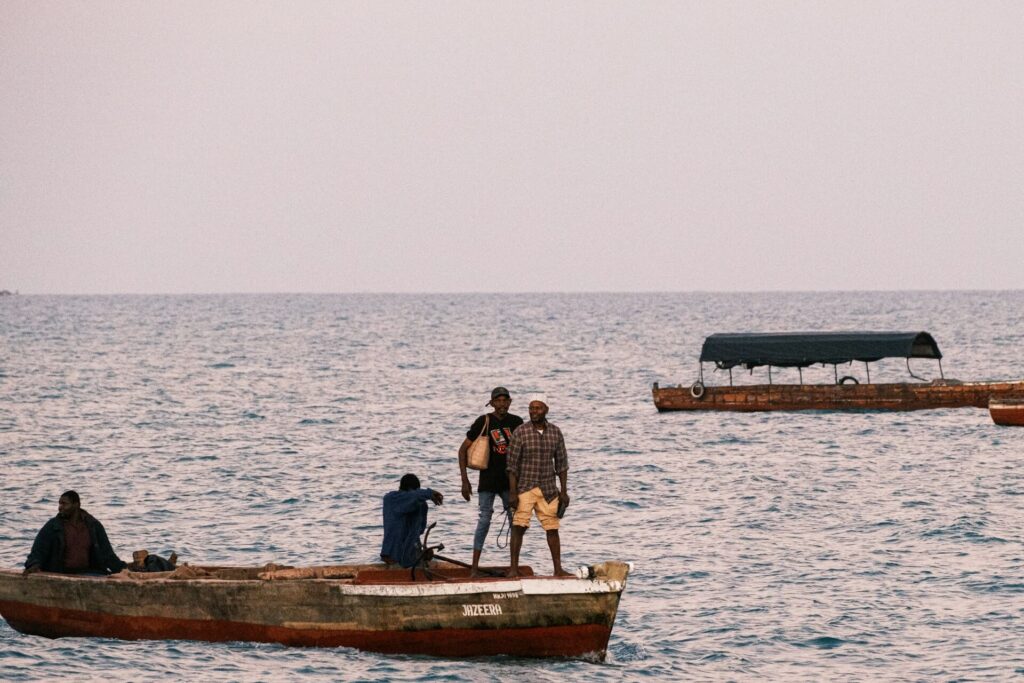
Night Market
The night market in “Stone Town” is a delightful and popular experience for most visitors to Zanzibar. In the evening, Forodhani Park by the waterfront transforms into a massive grill where “seafood” caught by local fishermen during the day is served. At the night market, you can enjoy grilled delicacies such as lobster, squid, and various kinds of fish, washed down with freshly pressed sugar cane juice made right before your eyes.
The “night market” is a culinary adventure enhanced by the aroma from the grills and the charm of gas lamps in the darkness. The night market in Zanzibar is not just a tourist attraction but is also highly appreciated by the local residents of Zanzibar.
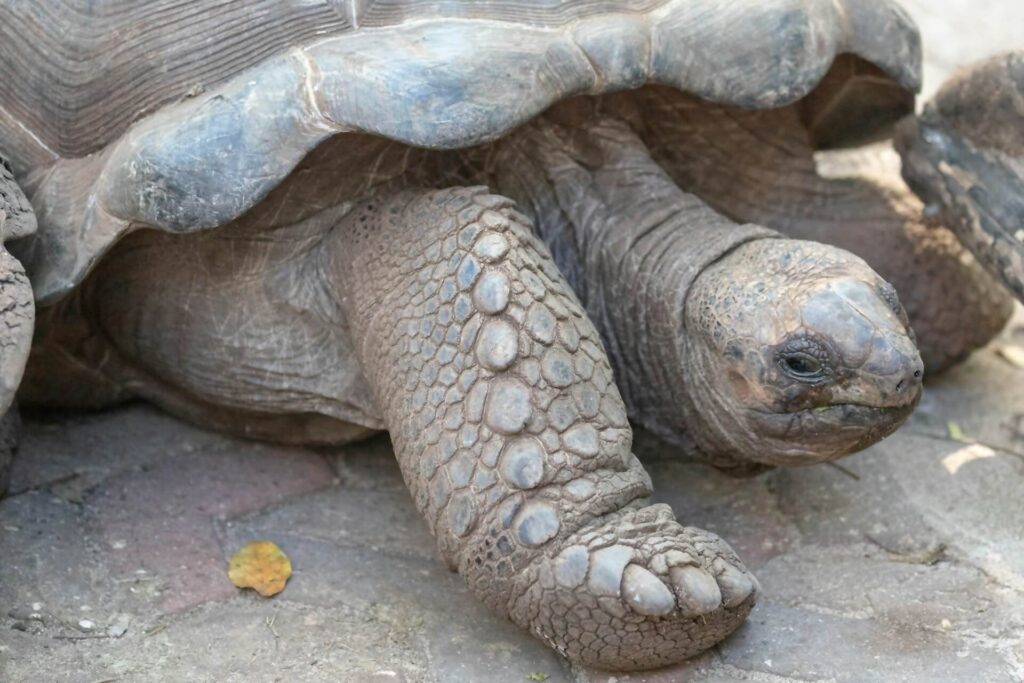
Sailing with a Dhow
In Zanzibar, there are many local fishermen willing to take you on a small sailing trip in their dhow (sailboat), but be aware that they probably won’t have life vests available. Ask the locals for help, and you can often arrange a boat trip.
For organized day trips with dhows, there are several local tour companies to choose from, and they are required to provide life vests. One example of such a company is Zanzibar Watersport in Ras Nungwi on northern Zanzibar.
Serena Hotel in Zanzibar Town and Safari Blue offer dhow excursions from the village of Fumba, located on a peninsula on Zanzibar’s southwestern tip (18 km, 45 minutes from Zanzibar Town). From here, you will sail all day in the idyllic Menai Bay Conservation Area. The area is known for its sandbanks, coral reefs, islets, uninhabited islands, and mangroves. In addition to the tropical fish on the coral reefs that you can see while snorkeling, there is a good chance (85%) of seeing dolphins. Occasionally, you might even spot humpback whales. The area also protects sea turtles that breed in the region.
Deep Sea Fishing
For those interested in deep sea fishing, Zanzibar offers excellent opportunities year-round. The waters between Zanzibar and Pemba are teeming with fish. If you’re looking to catch tuna, the season runs from August to October. The marlin and sailfish season extends from November to March. There are several companies that organize deep sea fishing trips in Zanzibar, such as “Zanzibar Big Game Fishing” or “Fishing Zanzibar.
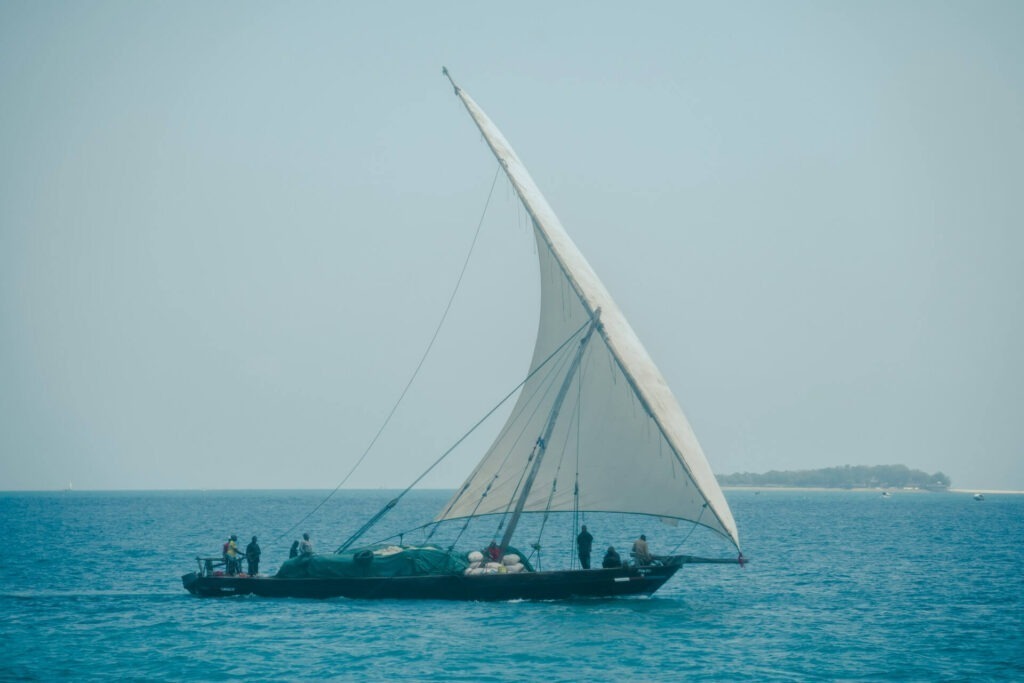
Historical Sites and Museums
Palace Museum
Along the waterfront in Stone Town/Zanzibar Town lies the Sultan Palace Museum. The building, constructed in 1890, served as the official residence of the sultan from 1911 until the revolution in 1964. Today, the Sultan Palace is a museum that offers visitors a glimpse into the lives of the sultans. Some of the sultan’s furniture and belongings survived the chaotic revolution and can be viewed at the museum.
The Peace Memorial Museum
This is considered Zanzibar’s national museum and provides an interesting insight into the history of Zanzibar. Exhibits at the Peace Memorial Museum include Livingstone’s medicine chest, a piece of Zanzibar’s and East Africa’s first railway, and a palm oil-powered bicycle lamp. History enthusiasts can learn about slavery, famous explorers in East Africa, the royal families (sultans), coins, stamps, local crafts, trade, and clove cultivation.
House of Wonders (Beit el Ajaib)
This majestic building is located along the waterfront in Stone Town and is a landmark for all who arrive in Zanzibar from the sea. The house was built in 1883 by Sultan Barghash and was intended to be used for various ceremonies. It was the first building in Zanzibar to have electricity and an elevator, which led the locals to call it the “House of Wonders.”
Slave Church (Anglican Cathedral)
The Anglican church on Mkunazini Road (in the center of the old town) is located on the same site where Zanzibar’s largest slave market once stood. The church, built between 1873-1883, symbolizes the end of the slave trade in Zanzibar. The church’s altar is located where slaves were once whipped, and the baptismal font is placed where infants were killed to secure a better price for their mothers. Outside the church, there is also a famous slave monument.
Slave Chambers and Coral Caves
Just north of Mangapwani Zanzibar (about 25 km north of Zanzibar Town) are labyrinths of caves that were used by illegal slave traders to hide slaves after the slave trade was officially banned in Zanzibar. Under the cover of night, they smuggled slaves to waiting ships. A visit here brings to life and provides insight into the injustices that the slaves endured.
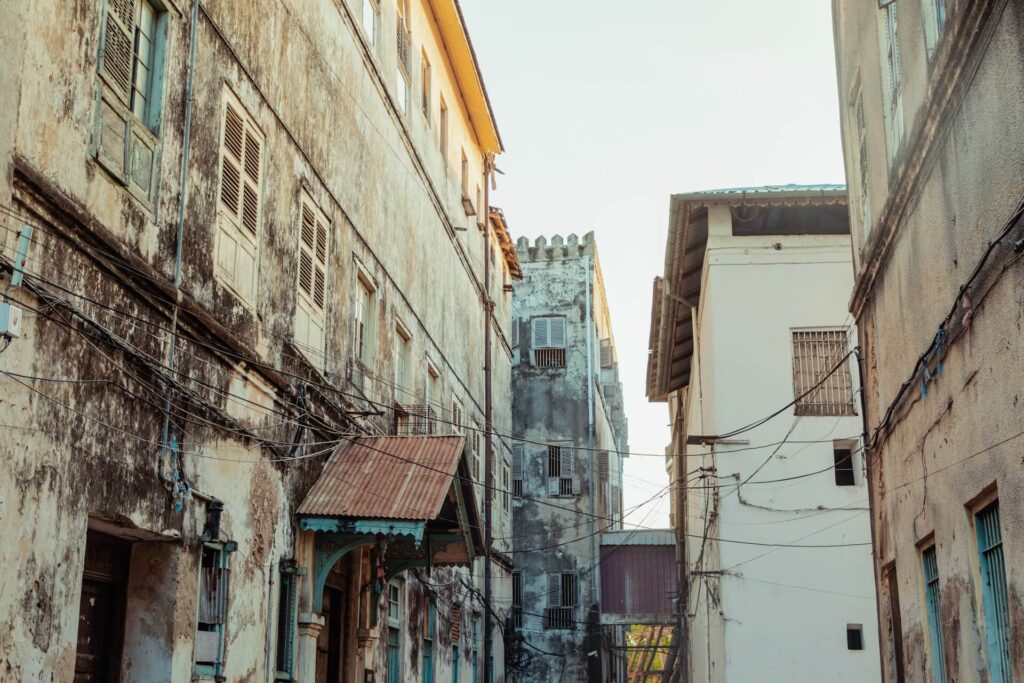
Interesting Islands around Zanzibar
There are about 23 islands around Zanzibar, and the following are those typically visited by tourists.
Changuu Island (Prison Island)
Changuu Island, also known as Prison Island or Kibandiko Island, was originally used as a detention center for unruly slaves. Later, a prison was built on the island that was never used, as it became a quarantine station instead. Most visitors come to the island for a day trip, but there are 15 deluxe lodges for overnight stays on the northwest side of the island. Boats to Prison Island depart from the Zanzibar in Stone Town near Mercury’s Bar. Just head down to the sandy Zanzibar, and boat owners will be waiting to take you. People visit Prison Island to escape the city, enjoy a swim on the island’s beautiful sandbar, or see the island’s giant tortoises. The boat ride takes about 20 minutes. Follow this link for a map of the island.
Mnemba Island
Mnemba Island is located about 20 minutes by boat from Zanzibar’s northeastern coast and can be accessed from Matemwe Zanzibar. Mnemba is a coral island with beautiful white sandy Zanzibares stretching around the entire island. Mnemba is particularly known for world-class diving, as the island is surrounded by coral reefs. If you’re lucky, you might also see sea turtles. The island has 10 “Zanzibar bandas” (huts) with direct Zanzibar access. The price is extremely high, ranging from $1000 to $1500 USD per day. Follow this link for a map of the island.
Bawe Island
Bawe Island is also located off Stone Town but is not as frequently visited as its neighboring island, Prison Island. In 1879, the island was given to the “Eastern Telegraph Company” to be used as a telegraph station for the underwater cable between Cape Town, Zanzibar, Seychelles, and Aden. Nowadays, it is a paradise island for vacationers. The island has 15 exclusive lodges. Bawe Island can be reached from the Zanzibar in Stone Town near Mercury’s Bar. Follow this link for a map of the island.
Chumbe Island
Chumbe Island Coral Park is a marine park where the island and its nearby coral reefs are protected. The island limits the number of simultaneous visitors to 14 people and offers accommodation in Eco-Lodges. Day visits are possible if there is availability. Contact the island two days before your planned visit to check availability. The cost is around $90 USD for a package that includes “lunch, boat transport, snorkeling with mask, forest walk with guide, and entrance fee.” Boats to Chumbe Island depart daily from Mbweni Ruins Hotel (10 minutes south of Stone Town). Booking must be made in advance.

